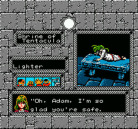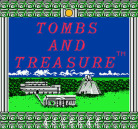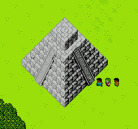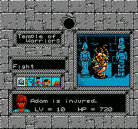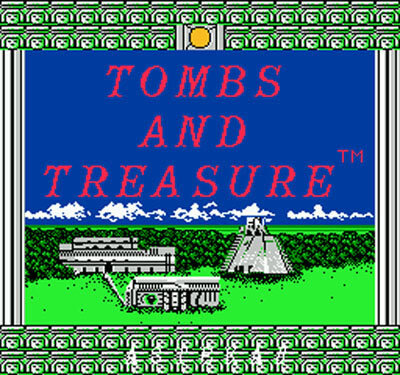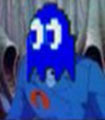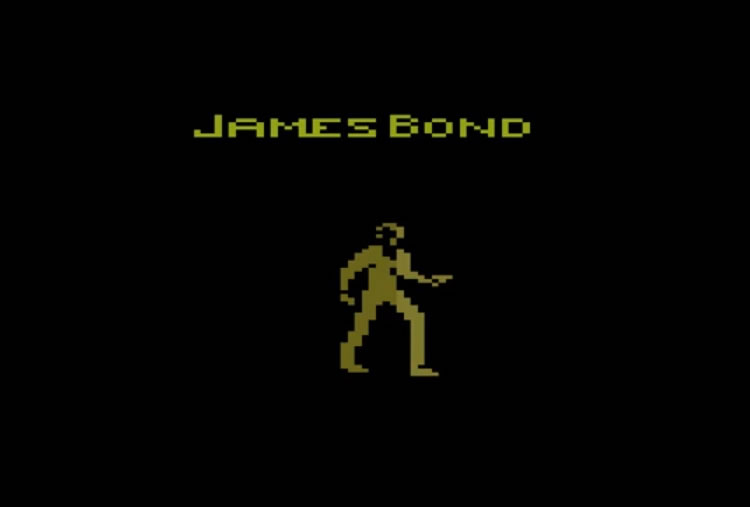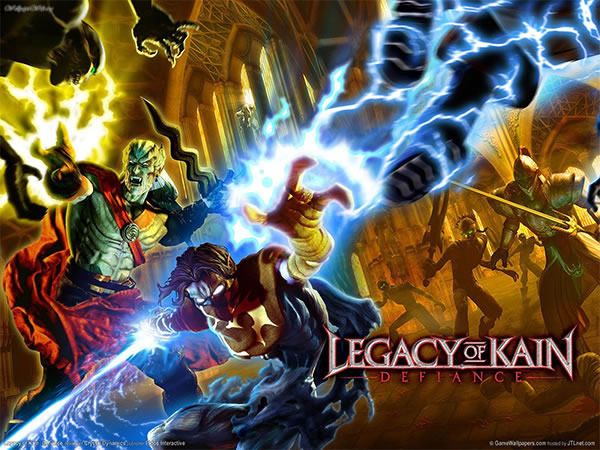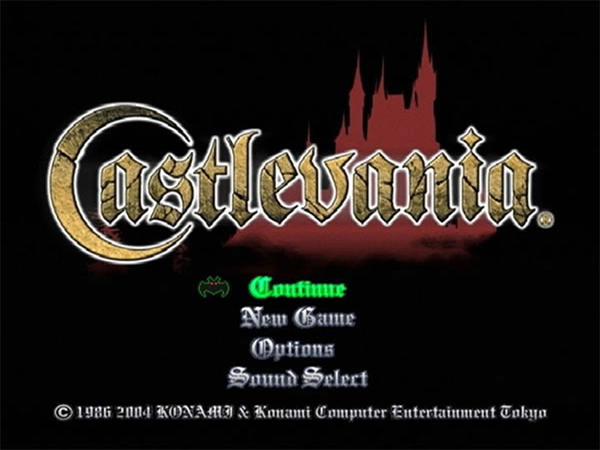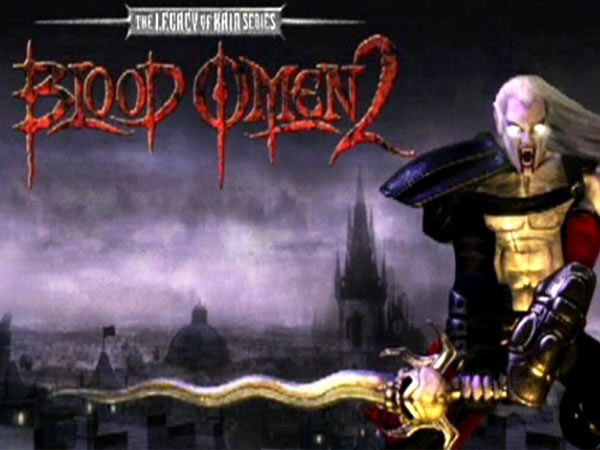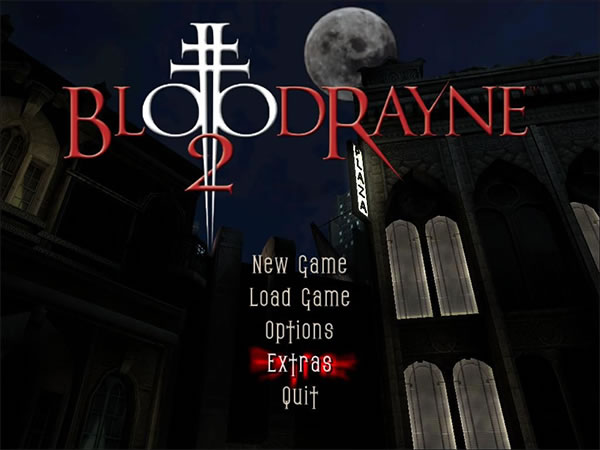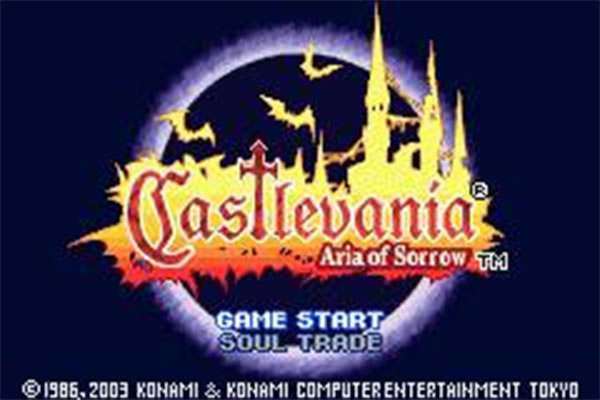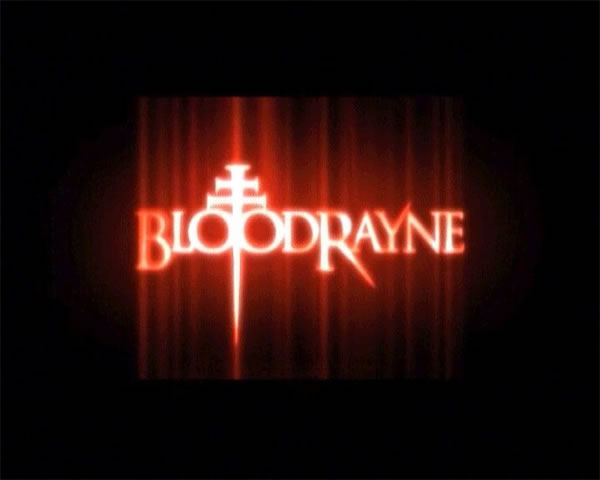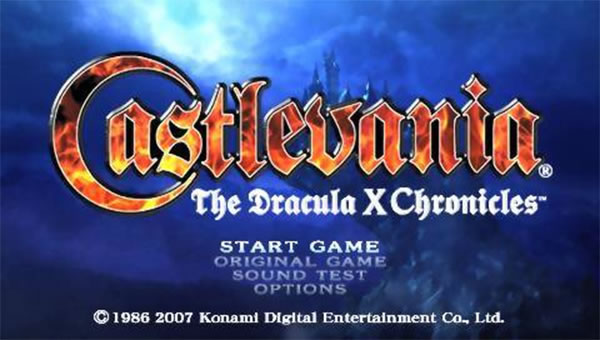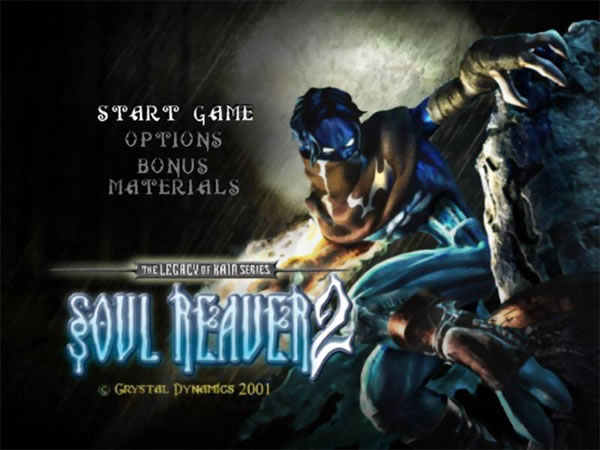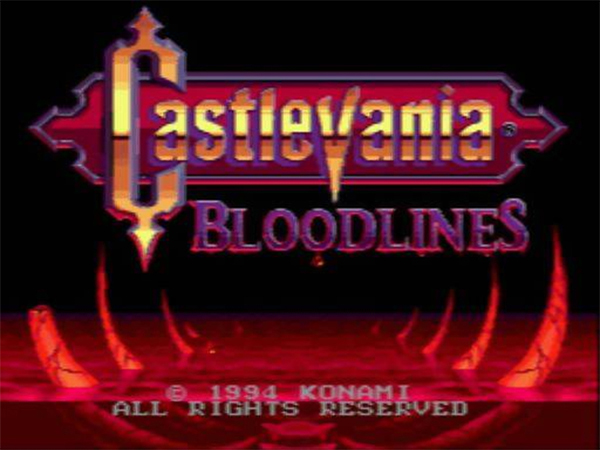- CLASSIC MAGAZINES
- REVIEW CREW
A show recapping what critics thought back
when classic games first came out! - NEXT GENERATION'S BEST & WORST
From the worst 1-star reviews to the best
5-stars can offer, this is Next Generation! - NINTENDO POWER (ARCHIVE)
Experience a variety of shows looking at the
often baffling history of Nintendo Power! - MAGAZINE RETROSPECTIVE
We're looking at the absolutely true history of
some of the most iconic game magazines ever! - SUPER PLAY'S TOP 600
The longest and most ambitious Super NES
countdown on the internet! - THEY SAID WHAT?
Debunking predictions and gossip found
in classic video game magazines! - NEXT GENERATION UNCOVERED
Cyril is back in this spin-off series, featuring the
cover critic review the art of Next Generation! - HARDCORE GAMER MAGAZING (PDF ISSUES)
Download all 36 issues of Hardcore Gamer
Magazine and relive the fun in PDF form!
- REVIEW CREW
- ELECTRONIC GAMING MONTHLY
- ELECTRONIC GAMING MONTHLY RANKS
From Mario to Sonic to Street Fighter, EGM
ranks classic game franchises and consoles! - ELECTRONIC GAMING MONTHLY BEST & WORST
Counting down EGM’s best and worst reviews
going year by year, from 1989 – 2009! - ELECTRONIC GAMING BEST & WORST AWARDS
11-part video series chronicling the ups and
downs of EGM’s Best & Worst Awards!
- ELECTRONIC GAMING MONTHLY RANKS
- GAME HISTORY
- GAME OVER: STORY BREAKDOWNS
Long-running series breaking down game
stories and analyzing their endings! - A BRIEF HISTORY OF GAMING w/ [NAME HERE]
Real history presented in a fun and pithy
format from a variety of game historians! - THE BLACK SHEEP
A series looking back at the black sheep
entries in popular game franchises! - INSTANT EXPERT
Everything you could possibly want to know
about a wide variety of gaming topics! - FREEZE FRAME
When something familiar happens in the games
industry, we're there to take a picture! - I'VE GOT YOUR NUMBER
Learn real video game history through a series
of number-themed episodes, starting at zero! - GREAT MOMENTS IN BAD ACTING
A joyous celebration of some of gaming's
absolute worst voice acting!
- GAME OVER: STORY BREAKDOWNS
- POPULAR SHOWS
- DG NEWS w/ LORNE RISELEY
Newsman Lorne Riseley hosts a regular
series looking at the hottest gaming news! - REVIEW REWIND
Cyril replays a game he reviewed 10+ years
ago to see if he got it right or wrong! - ON-RUNNING FEUDS
Defunct Games' longest-running show, with
editorials, observations and other fun oddities! - DEFUNCT GAMES QUIZ (ARCHIVE)
From online quizzes to game shows, we're
putting your video game knowledge to the test!- QUIZ: ONLINE PASS
Take a weekly quiz to see how well you know
the news and current gaming events! - QUIZ: KNOW THE GAME
One-on-one quiz show where contestants
find out if they actually know classic games! - QUIZ: THE LEADERBOARD
Can you guess the game based on the classic
review? Find out with The Leaderboard!
- QUIZ: ONLINE PASS
- DEFUNCT GAMES VS.
Cyril and the Defunct Games staff isn't afraid
to choose their favorite games and more! - CYRIL READS WORLDS OF POWER
Defunct Games recreates classic game
novelizations through the audio book format!
- DG NEWS w/ LORNE RISELEY
- COMEDY
- GAME EXPECTANCY
How long will your favorite hero live? We crunch
the numbers in this series about dying! - VIDEO GAME ADVICE
Famous game characters answer real personal
advice questions with a humorous slant! - FAKE GAMES: GUERILLA SCRAPBOOK
A long-running series about fake games and
the people who love them (covers included)! - WORST GAME EVER
A contest that attempts to create the worst
video game ever made, complete with covers! - LEVEL 1 STORIES
Literature based on the first stages of some
of your favorite classic video games! - THE COVER CRITIC
One of Defunct Games' earliest shows, Cover
Critic digs up some of the worst box art ever! - COMMERCIAL BREAK
Take a trip through some of the best and
worst video game advertisements of all time! - COMIC BOOK MODS
You've never seen comics like this before.
A curious mix of rewritten video game comics!
- GAME EXPECTANCY
- SERIES ARCHIVE
- NINTENDO SWITCH ONLINE ARCHIVE
A regularly-updated list of every Nintendo
Switch Online release, plus links to review! - PLAYSTATION PLUS CLASSIC ARCHIVE
A comprehensive list of every PlayStation
Plus classic release, including links! - RETRO-BIT PUBLISHING ARCHIVE
A regularly-updated list of every Retro-Bit
game released! - REVIEW MARATHONS w/ ADAM WALLACE
Join critic Adam Wallace as he takes us on a
classic review marathon with different themes!- DEFUNCT GAMES GOLF CLUB
Adam Wallace takes to the links to slice his way
through 72 classic golf game reviews! - 007 IN PIXELS
Adam Wallace takes on the world's greatest spy
as he reviews 15 weeks of James Bond games! - A SALUTE TO VAMPIRES
Adam Wallace is sinking his teeth into a series
covering Castlevania, BloodRayne and more! - CAPCOM'S CURSE
Adam Wallace is celebrating 13 days of Halloween
with a line-up of Capcom's scariest games! - THE FALL OF SUPERMAN
Adam Wallace is a man of steel for playing
some of the absolute worst Superman games! - THE 31 GAMES OF HALLOWEEN
Adam Wallace spends every day of October afraid
as he reviews some of the scariest games ever! - 12 WEEKS OF STAR TREK
Adam Wallace boldly goes where no critic has
gone before in this Star Trek marathon!
- DEFUNCT GAMES GOLF CLUB
- DAYS OF CHRISTMAS (ARCHIVE)
Annual holiday series with themed-episodes
that date all the way back to 2001!- 2015: 30 Ridiculous Retro Rumors
- 2014: 29 Magazines of Christmas
- 2013: 29 Questionable Power-Ups of Christmas
- 2012: 34 Theme Songs of Christmas
- 2011: 32 Game Endings of Christmas
- 2010: 31 Bonus Levels of Christmas
- 2009: 30 Genres of Christmas
- 2008: 29 Controls of Christmas
- 2007: 34 Cliches of Christmas
- 2006: 33 Consoles of Christmas
- 2005: 32 Articles of Christmas
- 2004: 31 Websites of Christmas
- 2003: 29 Issues of Christmas
- 2002: 28 Years of Christmas
- 2001: 33 Days of Christmas
- NINTENDO SWITCH ONLINE ARCHIVE
- REVIEW ARCHIVE
- FULL ARCHIVE
Tombs & Treasures
Presently, the cost of a flight to Cancun hovers around $500. For one percent of that price, you can have yourself a "staycation" and enjoy the environs of the Yucatan Peninsula in Tombs & Treasure for the Nintendo Entertainment System without the hassle of mosquitoes, the danger of sunburn, or the risk of bodily violation from the TSA.
It is not too much of an exaggeration to say that the game's environs can serve as a surrogate for a tour of Chichen Itza, the well-maintained ancient Mayan city in the Yucatan. If one were to superimpose a map of the actual city over the overworld map in Tombs & Treasure ... well, it's not exact. But the layout of the buildings is a close approximation of the real site, with some distances truncated for convenience. Therefore, the developers deserve praise for their research and attention to capturing real details.
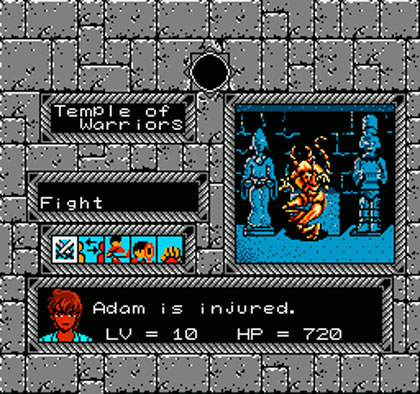
Perhaps this professional quality is unsurprising since the game was published for western audiences by the granddaddy of adventure gaming, Infocom. It's based on an earlier title Asteka, from the equally reputable Nihon Falcom company. The port was Infocom's only attempt to bring a title exclusively to a console, and their version, Tombs & Treasure, is truly a rare treasure entombed into obscurity in the Nintendo library. The interface works somewhat similarly to that of the Kemco MacVenture trilogy of adventure titles (Déjà vu, Shadowgate, The Uninvited), and like those games, it works quite well with a controller instead of a mouse. But while the Kemco games are revered as great, Tombs & Treasure has gotten little affection.
There's a lot to like about this adventure title which has a simple plot with a complicated solution. A boy has his summer off and decides to help his girlfriend find her missing father, an archeologist who accidentally released ancient Mayan monsters before he went missing. Jose, the local guide, comes along and provides muscle when you need it. You investigate sites in a first-person perspective and switch locations with a bird's eye view of your team. Puzzle solving depends on the collection of artifacts, their placement, and knowing which team member suits which task best. You will likely get stuck, flustered, and aggravated finding yourself cursing the Mayan gods or the programmers, but that's part of what makes an older game memorable. You get your money's worth by not being able to solve it too quickly.
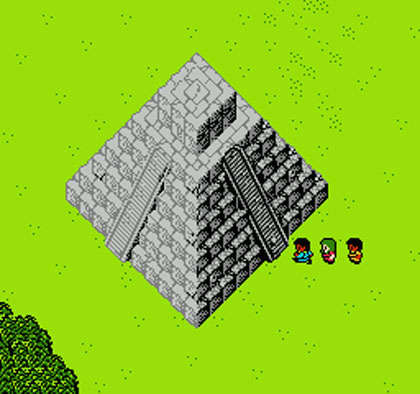
The difficulty is not simply a matter of if you have the right artifacts in the game itself, but whether or not you have the correct items in real life. Traditionally Infocom games come with swag or what their staff have termed "feelies"-items present in the game box that often provide players with hints that cannot be explicitly garnered directly from gameplay. This game follows that tradition: you are provided with an instruction manual disguised as an archeologist's diary and a map that will make your exploration a lot easier, especially as the latter indicates an otherwise hard-to-find secret passage into one of the temples. The feelies not only help you complete the game, but give a player a fuller, more immersive experience. We can gather the story from the in-game text, but there is further exposition in the manual helps you really get into the adventure. Therefore, it is highly recommended that if you buy a copy of Tombs, you try to find one complete in box.
The game has its shortcomings, namely the presence of turn-based combat (needlessly added to the NES version) which seem like a mindless nuisance. There is no apparent strategy and outcomes are a matter of chance. At least the presence of the demons creates a more colorful palette on your screen, but it does not really deepen the gameplay by much.
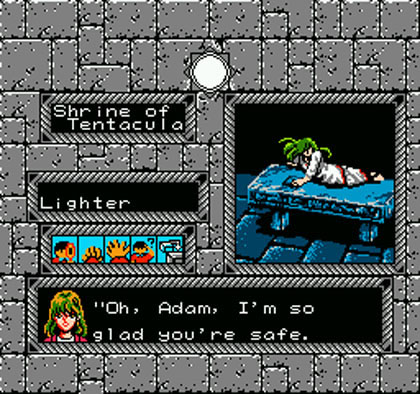
The chief problem is the presence of dead ends, some of which are never directly indicated to the player. Had the game been more thoroughly beta-tested to assure that the player would not unknowingly reach one of these unsolvable ends, Tombs could have been more fondly remembered as a great game. In one merciful situation, when your team springs a trap that locks them in a room, a text box clearly states, "This is the end-you better press reset!" This admonishment, however, does not come with every impasse. For example, if you assemble a compass using a magnetic rod and a bowl, you will not be able to use the magnet for the rest of the game, thus making it unsolvable. Without the aid of a text box, the poor soul playing this game will wander among the ruins in the vain hopes of stumbling on a solution that is not there. Therefore, when people think back on playing Tombs & Treasure back in the 80s, many caveat their praise by saying they were never able to finish it.
It is not too much of an exaggeration to say that the game's environs can serve as a surrogate for a tour of Chichen Itza, the well-maintained ancient Mayan city in the Yucatan. If one were to superimpose a map of the actual city over the overworld map in Tombs & Treasure ... well, it's not exact. But the layout of the buildings is a close approximation of the real site, with some distances truncated for convenience. Therefore, the developers deserve praise for their research and attention to capturing real details.

Perhaps this professional quality is unsurprising since the game was published for western audiences by the granddaddy of adventure gaming, Infocom. It's based on an earlier title Asteka, from the equally reputable Nihon Falcom company. The port was Infocom's only attempt to bring a title exclusively to a console, and their version, Tombs & Treasure, is truly a rare treasure entombed into obscurity in the Nintendo library. The interface works somewhat similarly to that of the Kemco MacVenture trilogy of adventure titles (Déjà vu, Shadowgate, The Uninvited), and like those games, it works quite well with a controller instead of a mouse. But while the Kemco games are revered as great, Tombs & Treasure has gotten little affection.
There's a lot to like about this adventure title which has a simple plot with a complicated solution. A boy has his summer off and decides to help his girlfriend find her missing father, an archeologist who accidentally released ancient Mayan monsters before he went missing. Jose, the local guide, comes along and provides muscle when you need it. You investigate sites in a first-person perspective and switch locations with a bird's eye view of your team. Puzzle solving depends on the collection of artifacts, their placement, and knowing which team member suits which task best. You will likely get stuck, flustered, and aggravated finding yourself cursing the Mayan gods or the programmers, but that's part of what makes an older game memorable. You get your money's worth by not being able to solve it too quickly.

The difficulty is not simply a matter of if you have the right artifacts in the game itself, but whether or not you have the correct items in real life. Traditionally Infocom games come with swag or what their staff have termed "feelies"-items present in the game box that often provide players with hints that cannot be explicitly garnered directly from gameplay. This game follows that tradition: you are provided with an instruction manual disguised as an archeologist's diary and a map that will make your exploration a lot easier, especially as the latter indicates an otherwise hard-to-find secret passage into one of the temples. The feelies not only help you complete the game, but give a player a fuller, more immersive experience. We can gather the story from the in-game text, but there is further exposition in the manual helps you really get into the adventure. Therefore, it is highly recommended that if you buy a copy of Tombs, you try to find one complete in box.
The game has its shortcomings, namely the presence of turn-based combat (needlessly added to the NES version) which seem like a mindless nuisance. There is no apparent strategy and outcomes are a matter of chance. At least the presence of the demons creates a more colorful palette on your screen, but it does not really deepen the gameplay by much.

The chief problem is the presence of dead ends, some of which are never directly indicated to the player. Had the game been more thoroughly beta-tested to assure that the player would not unknowingly reach one of these unsolvable ends, Tombs could have been more fondly remembered as a great game. In one merciful situation, when your team springs a trap that locks them in a room, a text box clearly states, "This is the end-you better press reset!" This admonishment, however, does not come with every impasse. For example, if you assemble a compass using a magnetic rod and a bowl, you will not be able to use the magnet for the rest of the game, thus making it unsolvable. Without the aid of a text box, the poor soul playing this game will wander among the ruins in the vain hopes of stumbling on a solution that is not there. Therefore, when people think back on playing Tombs & Treasure back in the 80s, many caveat their praise by saying they were never able to finish it.
HOME |
CONTACT |
NOW HIRING |
WHAT IS DEFUNCT GAMES? |
NINTENDO SWITCH ONLINE |
RETRO-BIT PUBLISHING
Retro-Bit |
Switch Planet |
The Halcyon Show |
Same Name, Different Game |
Dragnix |
Press the Buttons
Game Zone Online | Hardcore Gamer | The Dreamcast Junkyard | Video Game Blogger
Dr Strife | Games For Lunch | Mondo Cool Cast | Boxed Pixels | Sega CD Universe | Gaming Trend
Game Zone Online | Hardcore Gamer | The Dreamcast Junkyard | Video Game Blogger
Dr Strife | Games For Lunch | Mondo Cool Cast | Boxed Pixels | Sega CD Universe | Gaming Trend
Copyright © 2001-2024 Defunct Games
All rights reserved. All trademarks are properties of their respective owners.
All rights reserved. All trademarks are properties of their respective owners.






